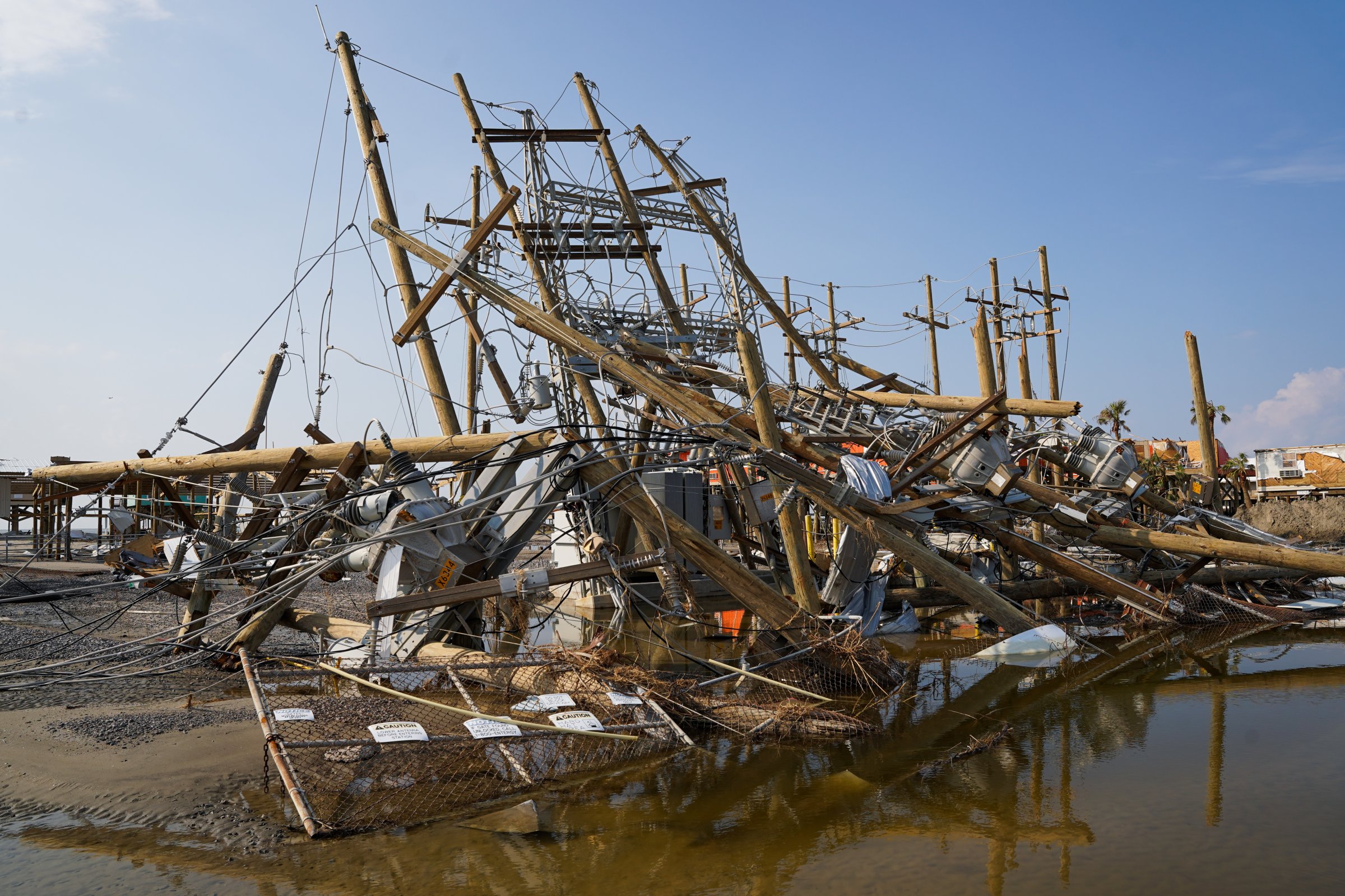
Americans are no strangers to power disruptions. From shorter outages that are just pesky enough to jostle daily routines, to widespread and prolonged grid failures, residents in every state are familiar with the experience of losing electricity. As this story was about to publish, New Yorkers in 11 upstate counties were in a state of emergency due to a snowstorm, and were preparing for “likely” local power outages, according to the public safety advisory.
As natural disasters become more frequent and more severe due to climate change, longer—and sometimes life threatening—blackouts are becoming a bigger threat. That was made clear in 2021, as the U.S. power grid systems strained and sometimes collapsed during multiple periods of severe weather. The average electricity customer experienced seven hours and 20 minutes without power that year, with more than five of those hours (72%) stemming from major weather events like hurricanes, wildfires, and snowstorms, according to the U.S. Energy Information Administration’s annual power industry report released last week.
Although the 2021 number was 52 minutes less than in 2020, it was still among the highest in recent history, and continued a trend of power outages becoming longer due to climate events. Between 2013 and 2016, for example, the average customer outage was three to four hours per year—with only about half of those hours attributable to a major event. (The numbers only include disruptions lasting at least five minutes.)
Despite projects underway around the country that aim to fortify the grid, including $20 billion in federal support from last year’s Build Back Better Act to modernize power systems, experts say there’s much more to do. The progressively worsening outages in recent years indicate that Mother Nature’s forces are impacting U.S. power systems faster than the country has been able to counter them with stronger infrastructure.
A state-level analysis of last year’s data shows how more frequent and more intense weather events—rather than, say, rogue tree falls or rascally wildlife—are driving the upward trend. In 2021, a winter storm plunged the Gulf states (and especially Texas) into an energy crisis. Then, Atlantic storms barreled into that region, including Hurricane Ida which badly damaged power lines around New Orleans. In the Northwest, disruptions stemmed from both extreme cold temperatures in the winter and scorching wildfires and heat waves in the summer that literally melted power lines.
As a result, power outages were uneven across the country, as the chart below shows. While 28 states and Washington, D.C. averaged less than five hours without power, states like Texas (20 hours), Oregon (25 hours), and Louisiana (80 hours) had more extensive disruptions. Customers in those states also experienced a greater number of power interruptions than most other Americans.
More, and more prolonged, power disruptions are expected due to climate change—unless U.S. power systems become more resilient. “If we don’t put in some sort of reliability-focused mechanisms, we will most definitely see more and more grid outages as the frequency and intensity of these weather impacts increases,” says Rebekah de la Mora, a policy analyst at the N.C. Clean Energy Technology Center at North Carolina State University.
After Hurricane Ida, for instance, repairs to Louisiana’s toppled transmission towers included upgrades that will allow the transmission lines to withstand Category-5 hurricane winds. But another critical resilience measure, residential rooftop solar panel installations, have dropped off in Louisiana since 2015, when the state’s incentive programs expired. Only about a third of the capacity installed in 2015 was installed in 2021, according to the Solar Energy Industries Association. Experts say a robust and multifaceted approach is necessary to prepare for climate impacts.
“We want to increase distributed generation, which includes increasing solar on rooftops for personal use, and increasing the number of microgrids in communities. And we also want to improve the reliability of the larger utility scale grid as a whole,” says de la Mora. “It’s not a question of [whether] any one solution will do, but in my personal opinion, it’s all solutions.”
More Must-Reads from TIME
- How Donald Trump Won
- The Best Inventions of 2024
- Why Sleep Is the Key to Living Longer
- How to Break 8 Toxic Communication Habits
- Nicola Coughlan Bet on Herself—And Won
- What It’s Like to Have Long COVID As a Kid
- 22 Essential Works of Indigenous Cinema
- Meet TIME's Newest Class of Next Generation Leaders
Contact us at letters@time.com